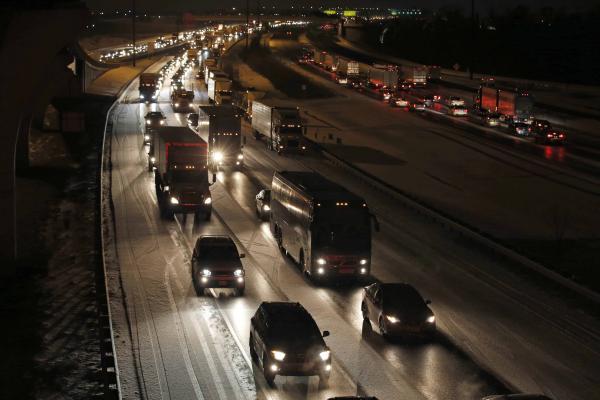
The East Coast is about to get a nor'easter. Washington, D.C., is expected to get hit with a blizzard, while Philadelphia, Baltimore and New York are bunkering down for a wintry storm.
Forecasts are still unclear about how much actual snow will befall these cities, but families are still preparing for the worst-case scenario.
"It's not out of the question that some localized areas receive over 2 feet of fresh snow," CNN meteorologist Taylor Ward said.
Part of that preparation has begun with states like North Carolina, which called for a state of emergency and deployed emergency response teams to help people stay safe on the road. So far, two people have died in car crashes in North Carolina, but more than 150 people were in car accidents in Washington, D.C., over the last few days, showing there may be more danger on the way.
To prepare for the coming storms, parents may want to take a refresher course on how to navigate the nasty weather, especially when they have their child in the car.
Driving in the snow is rarely an easy task for drivers. Of the near 5 million car accidents every year, about 22 percent (so about 1.5 million) are weather-related caused by snow, rain or fog. In most of these accidents, the road pavement was wet or there was too much snow on the road, according to the U.S. Department of Transportation.
In the last 10 years, there have been about 210,000 car crashes from snow and sleet, accounting for 4 percent of all vehicle crashes. There were an additional 55,000 injuries, with about 740 deaths.
There are some tips to driving in this kind of weather, like staying alert by getting the proper amount of sleep before hitting the road. It's also important to make sure your tires have the proper amount of air and that there's always enough gas in the tank in case you get stranded, AAA suggests.
When in the snow, drivers should "accelerate and decelerate slowly," applying the gas at a slow rate and letting the car roll to a stop. You should drive slow and stop as few times as possible to lessen the risks of skidding out on your brakes. It also may not be a good idea to power drive up hills, since that can send your wheels spinning, AAA explained.
But traveling with a child can be a little more difficult, as drivers will not only have to worry about their own safety but also the little tyke in the back seat.
Safe Kids Worldwide, an organization that offers resources on how to keep kids safe in schools and other public arenas, says it's important for children to be bundled up in winter clothes so that they keep warm in the car. This may also require parents to keep a blanket nearby.
Parent drivers may also want to check their car's tailpipes, specifically to make sure it's not blocked with snow since that can send carbon monoxide into the car and prove fatal for the child.
"You never know when you might get stuck in the cold and snow, so always have an emergency bag stocked in your car," Safe Kids explained. "Be sure to include necessities like baby food or formula, water, diapers, extra blankets and a spare set of warm clothing. You'll probably never need it, but it's nice to have just in case."

